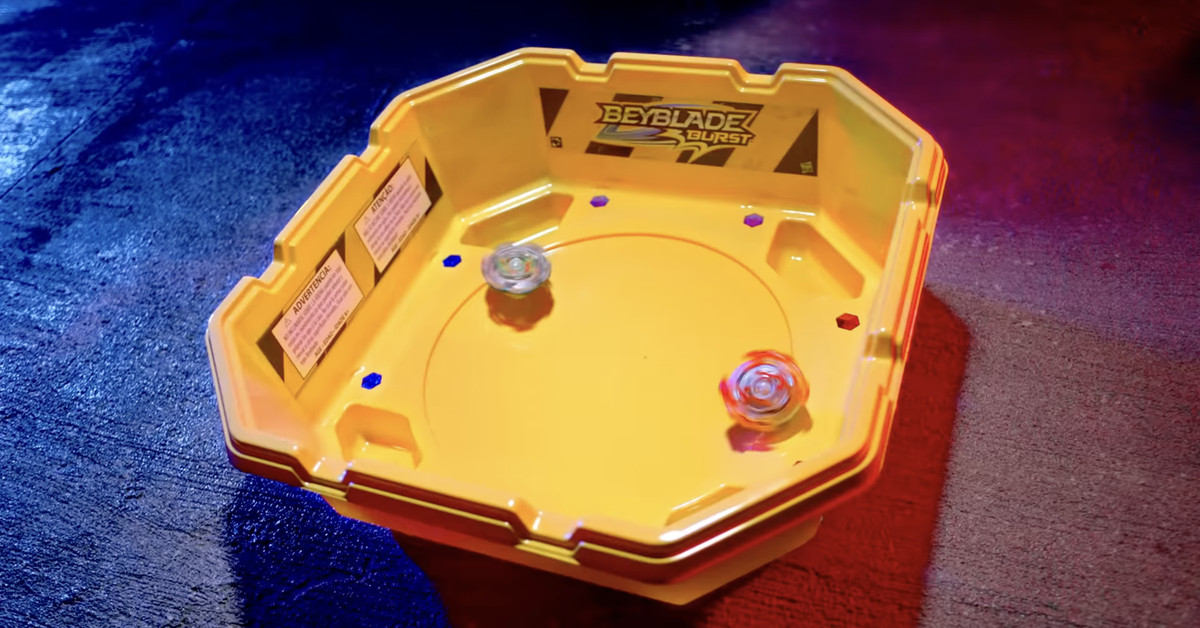Horizon Call of the Mountain is not enough of a good thing
Archery in Horizon Call of the Mountain.Finally, a Horizon VR you’ll want to hang out in. Continue reading…
/cdn.vox-cdn.com/uploads/chorus_asset/file/24437112/Horizon_Call_of_the_Mountain_20230215110820.jpg)
Horizon Call of the Mountain is so, so painfully close to being brilliant.
Call of the Mountain is Sony’s first-party launch flagship for the PlayStation VR 2, the gaming giant’s very solid new virtual reality headset. A spinoff of PlayStation 4 title Horizon Zero Dawn and its PlayStation 5 sequel Horizon Forbidden West, the game combines climbing and archery, two of the most uniquely pleasurable things to do in VR. Its world is detailed and gorgeous, a mix of verdant forests, palpably chilly icescapes, and rusty post-apocalyptic ruins. It turns VR eye tracking, a feature I’ve been skeptical of in the past, into an entirely natural mechanic.
But it also reminds me at every turn that it could be better. It lifts a big chunk of its gameplay wholesale from other titles but with the sense of challenge smoothed off. It doles out its excellent combat stingily. Its story is clunky yet painfully inescapable. This is Sony’s big chance to sell people on next-gen VR gaming — but it doesn’t commit hard enough to close the deal.
If you’ve played a Horizon game, you’ll be familiar with Call of the Mountain’s world: a far-future setting where machines have nearly destroyed humanity, robot dinosaurs roam the land, and people respond to ancient airplanes and car keys with mystified befuddlement. Call of the Mountain gets a brief appearance from main series protagonist Aloy, but you’re playing a new character named Ryas, an expert climber and archery marksman with a dark past.
And where earlier Horizon games relied on a standard console control system, this game uses the PSVR 2’s Sense controllers. You move around by pressing the controller’s face buttons and swinging your arms at a steady gait. (You can also turn on teleportation, especially if you tend to get motion sickness — although I don’t consider myself particularly strong-stomached and found the default option totally comfortable, and so did my colleague Sean Hollister.) You climb by physically reaching for handholds on rock faces and buildings. You grab a bow by reaching over your shoulder and squeezing the trigger on one controller, then grab an arrow with the other and pull your arm back before you release it.
Over the course of the game, you’ll get extra tools like a grappling hook, a set of pickaxes, and a sharp-edged throwing disc. Some pitched battles will have you swapping between several different arrow types, including fire arrows that deal damage over time and “tear arrows” that knock off armor while swiping your arms to dodge around an arena. And there are lots of little showcases of hand-tracking tech around the levels, like rocks you can stack into cairns or brushes you can use to paint on walls, although what you can and can’t grab doesn’t always seem consistent — some apples can heal you, while others don’t seem to be grabbable.
The biggest climbing challenge is not tripping over the PSVR 2 cable
The designers of Call of the Mountain have all but certainly played Crytek’s VR free-climbing series The Climb because large sections of the game work almost exactly like it — which, in case it’s not clear, is great. But the similarity also highlights what isn’t in these sections: namely, much difficulty. The Climb is built around a stamina bar that drains every time you take one hand off a grip, which means you’re constantly focused on swinging from one ledge to another, trying not to fall to your death. Call of the Mountain lets you hang around as long as you want, and your hands snap to the grips almost magically. It’s a little bit of a workout to keep moving your arms, but it’s pretty hard to fail and consequently not nearly as gratifying to succeed. The biggest hurdle is turning corners without getting your feet tangled in the PSVR 2 cable.
Your hands will snap to these ledges with your eyes closed.
Bow-and-arrow combat has the opposite problem: it’s full-featured and challenging, but there’s not nearly enough of it. Call of the Mountain melds the basic fun of VR archery with the distinctive robot-fighting mechanics of Horizon, built around shooting off machines’ armor and exploiting weak points. The game’s encounters can be fast-paced and genuinely thrilling. You’re constantly picking up arrow parts, which you can turn into different kinds of ammunition. But you’re typically only using those arrows in a few big fights for each level. You can optionally snipe at enemies in stealth sections, but the game doesn’t seem built for it — at one point, I destroyed all the machines in an area, only to have Ryas keep fretting about being seen while he moved. There’s a challenge arena where you can shoot stationary targets, but it doesn’t demand the same improvisation and dodging that active combat does.
And little, basic elements of the game are surprisingly hit-or-miss. Call of the Mountain uses an optional eye tracking system, for instance, that’s subtle yet effective. During conversations with characters, you can select dialog options by looking around a wheel and hitting a button to select whichever option you’re currently staring at — I officially never want to use an analog stick in a role-playing game conversation again. And yet when you want to grab your grappling hook or pickaxes, the game uses an item selection wheel that’s frustratingly slow and inconvenient. The game has two weapons — a conventional bow and a slingshot that effectively shoots grenades — but swapping between them is clumsy enough that I all but ignored the latter.
The combat is a great fusion of basic VR archery with Horizon’s distinctive robot hunting
All this fighting and climbing is a journey of redemption for Ryas, who we’re told in the opening chapter is something called a Shadow Carja. Shadow Carja are a Horizon splinter faction that committed atrocities at some point before the game’s beginning, and Ryas has been freshly spirited out of prison, completing missions in order to earn a full pardon and find his brother. In case you don’t remember this establishing character element, you’ll be reminded by somebody sneering “Shadow Carja” approximately one million times over the next roughly eight hours — including Ryas himself, one of the chattiest first-person avatars I’ve played.
I actually liked inhabiting Ryas, in part because his voice actor, Mark Allan Stewart, does a good impression of Stephen Russell’s cynical yet sympathetic antihero in Thief, one of the best game protagonists around. But come on, man, we’re climbing a 20-foot robot skeleton in an abandoned factory at the top of a mountain and you’re delivering a monologue to nobody about how your father made you go hunting when you were eight years old, peppered with a comment on every single type of arrow component I pick up. Don’t you ever get winded? Oh, and now you shot one of the hidden targets around a level and celebrated by yelling I’ve still got it! or Put that one down! — sir, it was a giant stationary red X about 15 feet away from you, please chill out a little.
Ryas, please chill out a little
And look, it’s been a few years since I played Horizon Zero Dawn, and I skipped out on Forbidden West, so I take full responsibility for not recalling the intricacies of the setting. I theoretically know a lot of the backstory, even if I’d almost completely forgotten it between installments. But the sheer density of plot and offhand intra-franchise references for such a relatively short game is overwhelming.
I don’t expect — or even want — 40-hour console-style gaming marathons in VR. Other developers, however, have shown that you can pack a lot of action into a neat package. The Meta Quest 2 has Resident Evil 4 VR, a VR-native port of the classic horror shooter. Valve showcased the Index’s strengths with Half-Life: Alyx, an economically written Half-Life 2 spinoff with copious, satisfying puzzles and combat. While neither of them was brutally punishing, they weren’t afraid to make you work for your success. Sony is clearly aspiring to that kind of tentpole status for the PSVR 2, and it falls shy of the mark.
Call of the Mountain certainly isn’t the kind of interactive theme park ride that plenty of early VR titles offered. But it feels like it was either sanded down to avoid alienating VR newcomers, or its designers weren’t given the resources to fully realize its potential. All I can do is wonder what might have been — and maybe play some of those boss fights a few more times.

 Konoly
Konoly 
































